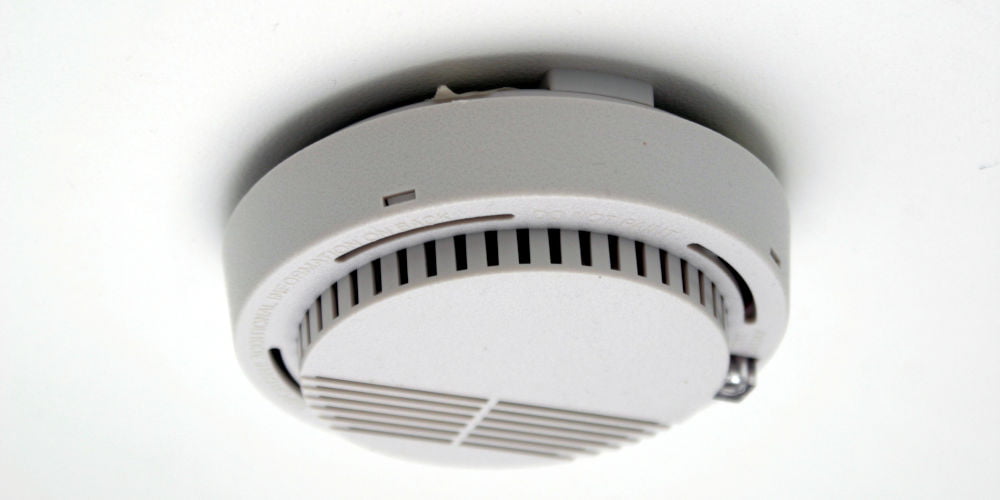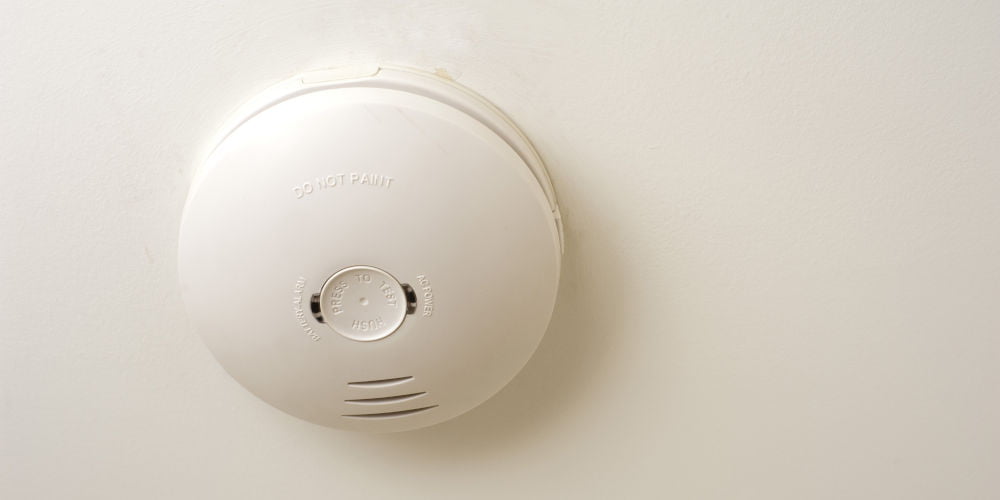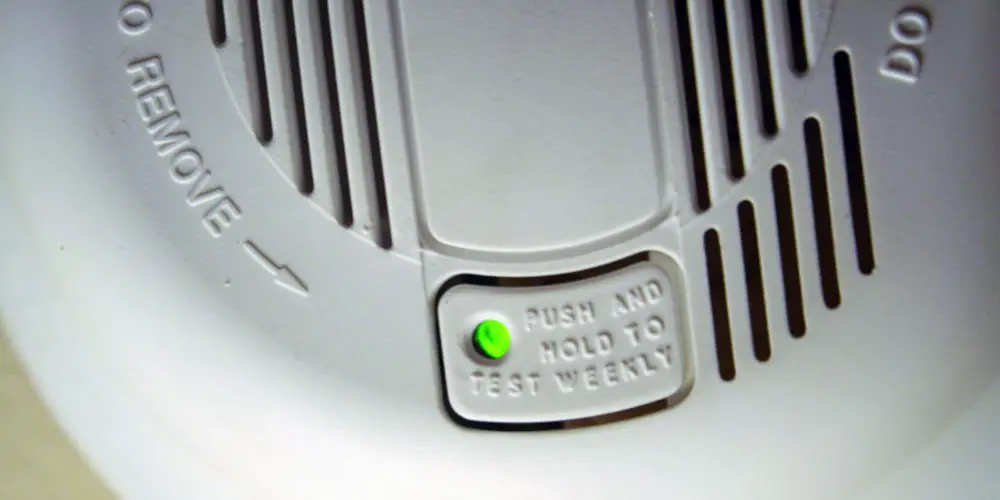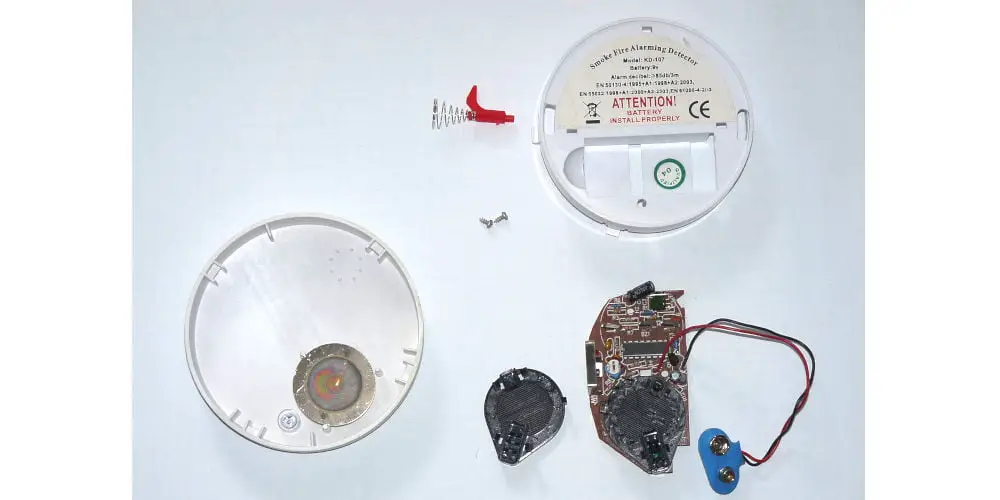Where is the best smoke alarm placement?

Over 200 people die each year from house fires, with the majority of fatalities occurring between 10pm and 6am, when people are asleep. So if you’re serious about fire safety, you’ll want to learn where is the best smoke alarm placement and ensure you install the right unit for your home.
Having the right fire safety measures in place could save you or a loved one’s life. So in addition to installing smoke alarms, consider fitting a carbon monoxide detector as well.
Why do you need smokes alarms in your home?
Each year, there are over 37,00 house fires, and sadly, over 200 people die from fire-related causes. Most of these deaths happen while people are asleep. The most common cause of house fires is electrical equipment misuse, mainly cooking appliances.
What’s astounding is that around 38% of battery operated smoke alarms failed to sound during a fire. The biggest cause? Missing, flat or disconnected batteries.
A lack of working fire alarms can significantly reduce your chances of living as you only have a few minutes to escape. It could be too late by the time you smell or hear the fire. You are four times more likely to survive if you have a working smoke alarm.
The cost of buying a smoke alarm? £15. The price of buying a smart smoke detector is a little higher but worth it. Regardless of the cost, your life and that of your family members is worth significantly more. It pays to have at least one smoke alarm in your home.
What type of smoke alarms are available?
There are mainly four types of smoke alarm currently on the market: Ionisation, Optical (also described as photo electronic), Heat and Combined. Regardless of the type, the ideal smoke alarm placement is the same.
Ionisation
As the cheapest option, Ionisation smoke alarms are very sensitive to small particles of smoke produced by fast flaming fires, such as paper and wood. They detect this type of fire before the smoke gets too thick.
That said, they are slightly less sensitive to slow burning and smouldering fires which give off larger quantities of smoke before flaming occurs. Also, they can be too over-sensitive near kitchens.
Optical
These are more expensive but are more effective at detecting larger particles of smoke produced by slow-burning fires, such as smouldering foam-filled upholstery and overheated PVC wiring. That said, they are slightly less sensitive to fast flaming fires.
Optical smoke alarms can be installed near (but not in) kitchens, as they are less likely than ionisation alarms to go off when toast is burned.
Heat Alarms
These detect an increase in temperature from a fire and are insensitive to smoke. So are ideal for kitchens. However, they only cover a relatively small area and so you might need to install a few in a large kitchen.
Combined
There are two main combination alarm available.
Combined Optical Smoke and Heat Alarms: Designed to reduce false alarms while increasing the speed of detection.
Combined Smoke and Carbon Monoxide Alarms: More affordable than having to purchase both and takes up far less space.
Battery vs mains power
All of these looks similar and can be powered by either a battery or mains electricity. Some use a battery for backup to the mains power. That said, you might need an electrician to correctly find the best smoke alarm placements for mains powered unit.

How many smoke alarms do I need?
Depending on your home’s size and layout, you might only need a heat alarm in the kitchen and a smoke alarm in the common areas of each floor. Some will insist on adding smoke alarms to each bedroom for further protection.
During sleep, your sense of smell decreases to almost non-existent, hence the reason why it’s worth installing an optical smoke alarm or a combined optical smoke and heat alarm in each bedroom.
Thankfully, your hearing doesn’t diminish as you sleep and so your body will naturally wake up when triggered by a high pitched alarm.
If you do decide to install multiple smoke alarms, then it’s worth purchasing interlinking units as if one detects smoke, all alarms will sound.
Where is the ideal smoke alarm placement?
Firstly, before you install smoke alarms, you need to consider who will be able to hear it. There’s no point, for example, having one in your dining room that’s hardly used and hidden behind a think wooden door.
It’s worth testing different smoke alarm placements with a family member before securing it. It should be loud enough to be heard by the intended people. It’s also worth shutting doors and seeing if you can still hear it.
In terms of the best smoke alarm placement, you should secure the unit in the centre of the ceiling. Ideally, place the smoke alarm away from obstructions or dead spaces, such as where the walls and ceiling join.

What to look for when buying smoke alarms
Ideally, you’d buy a smoke alarm which reacts quickly. Some alarms are slow-to-trigger and could cost vital seconds when a fire strikes. Look for smoke alarms that conform the BS EN 14604 standard as shown on the unit.
That said, some alarms which meet these standards are still slow-to-trigger, and so you should test any alarms before buying to ensure they provide adequate protection before installing them.
Before installing a smoke alarm, you should write on the unit the install date and the date when the battery is due for replacement. It’s worth following the manufacturer’s guidance on the installation, location and maintenance of the alarm. So read the manual first.
After finding the ideal smoke alarm placement and securing the unit in place, ensure everyone who lives in your home knows what it sounds like and how to safely exit the property in the event of a fire.
Which one should I buy?
Picking the right smoke alarm can be tricky as there’s a wide range of options available. If you’re looking for an affordable option, consider buying the FireAngel SB1-TP-R Smoke Alarm, which comes as a pack of 2.
For a high tech option, consider the Google Nest Protect 2nd Generation Smoke + Carbon Monoxide Alarm, which also use an app to communicate. Google are working on integrating all Nest products into their Google Home app.
Finally, if you’re looking for a fixed 10-year battery lifespan then consider the Semoss 2 Pack Fire Safety Smoke Detector and Fire Alarms. You’ll never have to change the battery but will still need to check and maintain the unit.

How should I maintain my smoke detectors?
Thankfully, smoke alarms require very little maintenance. Each week, you should test the smoke alarm’s battery by pressing the test button. This sounds like common sense, but most people don’t test their smoke alarm often.
Unless you’ve purchased a 10-year alarm, ideally you should change the battery each year. After 10 years, you should replace any smoke alarms in your property.
It’s worth lightly dusting your smoke alarm every few months to ensure the sensor isn’t covered by dust and if the case doesn’t open, vacuum through the holes. Get a new smoke alarm after 10 years.
What should I do if my smoke alarm is beeping or chirping?
Should your alarm keep beeping or chirping, then it’s a sign that the battery needs replacing. If it keeps beeping or chirping, then it usually a sign that the alarm has reached the end of its life and means it’s time to buy a new one.
It’s essential to keep the instruction somewhere easy to find as they’ll help you to interpret the noises your alarm makes.




